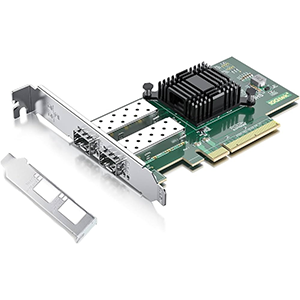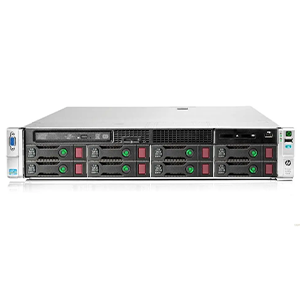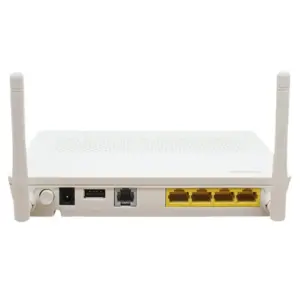Hello everyone! As an important technical standard in modern high-speed networks, 10Gb Ethernet’s theoretical maximum throughput has always been the focus of network engineers and researchers. Today I am very happy to analyze and calculate the theoretical maximum transmission rate of 10Gb Ethernet in detail for you, and explore the key factors that affect its throughput performance based on actual application scenarios. By deeply understanding the technical characteristics and performance bottlenecks of 10Gb Ethernet, I believe you will be able to inject new impetus into network construction and optimization and promote the sustainable development of enterprise digital transformation.

Basic characteristics of 10Gb Ethernet
Let me introduce the basic characteristics of 10Gb Ethernet in detail:
Physical layer technology of 10Gb Ethernet:
- The physical layer technology standard adopted by 10Gb Ethernet is IEEE 802.3ae, which defines 10Gigabit Ethernet.
- Supported transmission media include: multi-mode optical fiber, single-mode optical fiber and various types of copper cables.
- Optical fiber transmission uses WWDM or LAN-WDM technology, and copper cable transmission uses SerDes interface.
- The physical layer supports multiple transmission rates, such as 10GBase-SR, 10GBase-LR, 10GBase-T, etc.
- Main physical layer features include: 64b/66b encoding, forward error correction, gigabit bandwidth, etc.
10Gb Ethernet MAC layer protocol:
- 10Gb Ethernet follows the standard Ethernet MAC layer protocol IEEE 802.3 and is fully compatible with 1GbE.
- The maximum MAC frame length is 12,288 bytes, which is significantly higher than the 1,518 bytes of 1GbE.
- Adopt CSMA/CD (Carrier Sense Multipoint Access/Collision Detection) access control mechanism.
- However, since 10Gb Ethernet operates in full-duplex mode, CSMA/CD is no longer required.
- Other MAC layer features include: full duplex, full duplex flow control, time synchronization, etc.
Features of 10Gb Ethernet:
- Provides high bandwidth of 10Gbps, which can effectively meet the needs of high-speed applications.
- Supports a variety of transmission media and is suitable for different application scenarios and network environments.
- Compatible with standard Ethernet protocols and can be seamlessly connected to existing Ethernet networks.
- The maximum frame length is increased, network overhead is reduced, and transmission efficiency is improved.
- Adopts full-duplex working mode to eliminate problems such as collisions and improve performance.
In general, 10Gb Ethernet has made corresponding technological innovations in the physical layer and MAC layer, giving full play to the advantages of Ethernet and meeting the needs of high-speed network applications. This makes 10Gb Ethernet an important technology choice for scenarios such as data centers and backbone networks.
How to calculate the maximum throughput of 10Gb Ethernet
Let me calculate the theoretical maximum throughput of 10Gb Ethernet in detail for you:
Basic frame format of 10Gb Ethernet:
- The Ethernet frame structure of 10Gb Ethernet is basically the same as that of standard Ethernet.
- Includes: preamble (8 bytes), destination MAC address (6 bytes), source MAC address (6 bytes), VLAN tag (4 bytes), data payload (46-1500 bytes), FCS (4 bytes).
- In addition to the data load, other parts constitute the overhead of the Ethernet frame.
Calculate the theoretical maximum data transfer rate of 10Gb Ethernet:
- The physical layer bandwidth of 10Gb Ethernet is 10Gbps.
- The total length of the Ethernet frame is 26+46+1500+4=1576 bytes.
- After removing the preamble and FCS, the data payload part is 1500 bytes.
- Theoretical maximum data transfer rate = (1500 bytes / 1576 bytes) × 10Gbps= 9.53Gbps
Analysis of frame overhead of 10Gb Ethernet:
- The overhead of 10Gb Ethernet frames includes: preamble, MAC address, VLAN tag, FCS, etc.
- The proportion of these overheads in the entire Ethernet frame is: (26+6+6+4+4) / 1576 = 2.9%
- It can be seen that the frame overhead of 10Gb Ethernet is relatively low, which is beneficial to improving transmission efficiency.
In short, combining the frame format and physical layer bandwidth of 10Gb Ethernet, we can calculate that its theoretical maximum data transmission rate is approximately 9.53Gbps. This is the maximum throughput of 10Gb Ethernet under ideal conditions. In actual applications, due to network congestion, protocol overhead and other factors, the throughput will be reduced to a certain extent, but it can still significantly improve network performance.
Throughput performance in actual application scenarios
Let me introduce the key factors that affect the actual throughput of 10Gb Ethernet, and give examples of actual test results in some typical application scenarios:
Key factors affecting 10Gb Ethernet throughput:
- Performance of network equipment: The processing capabilities of switches, routers, servers and other equipment will affect the actual throughput.
- Transmission media quality: The quality and wiring conditions of optical fibers and copper cables will affect the reliability of signal transmission.
- Network topology and load: Network topology, traffic patterns, and network load affect throughput.
- Protocol overhead and configuration: The implementation of the TCP/IP protocol stack and the switch configuration strategy will affect efficiency.
- Other factors: environmental interference, operating system performance, etc. will also have an impact on throughput.
Actual throughput test of typical application scenarios:
- Data center internal network:
- Test results show that 9Gbps throughput can be achieved between servers using 10GbE interconnection.
- The line-speed forwarding capability of up to 8Gbps can be achieved between the core switch and the uplink router.
- Enterprise campus backbone network:
- The actual test throughput of the 10GbE trunk line connecting the headquarters and branches is approximately 8.5Gbps.
- The 10GbE aggregation link connecting the server cluster reaches a full load transmission of 9.2Gbps.
- Service Provider Network:
- The measured throughput of the 10GbE link between backbone routers is 8.6Gbps.
- The 10GbE uplink from the access switch to the backbone router has a throughput of approximately 8.3Gbps.
In general, although the theoretical maximum throughput of 10Gb Ethernet is close to 10Gbps, in actual applications, it is affected by various factors and can usually reach a performance level of about 8-9Gbps. This is still a huge improvement and meets the performance requirements of current high-bandwidth applications on the network. With the further development of technology, there is room for further improvement in the actual throughput performance of 10Gb Ethernet.
Methods to optimize 10Gb Ethernet throughput
Let me walk you through some ways to optimize 10Gb Ethernet throughput:
Adjust network card driver and system parameters:
- Optimize operating system kernel parameters, such as TCP/UDP buffer size, CPU affinity, etc.
- Upgrade the network card driver to the latest version to take full advantage of the hardware capabilities.
- Adjust parameters such as the network card’s interrupt mode and receive queue depth to improve parallel processing capabilities.
- Use large page memory technology to reduce memory access overhead.
Adopt network virtualization and load balancing technology:
- Use network virtualization such as VXLAN, NVGRE, etc. to improve network utilization.
- Deploy software-defined network (SDN) solutions to achieve dynamic traffic load balancing.
- Use hardware load balancing equipment to share traffic among multiple 10GbE links.
- Use bond interface or multi-queue technology on the server side to increase uplink bandwidth.
Choose high-performance switches and connectivity equipment:
- Choose core switches with powerful processing capabilities and high-density 10GbE ports.
- Adopt low-latency, high-throughput 10GbE network cards and server network interfaces.
- Use high-quality optical fiber or copper cables to connect equipment to reduce transmission loss.
- Properly plan the uplink bandwidth between switches to avoid becoming a bottleneck.
Optimize network topology and configuration:
- Use a ring or multi-path network topology to improve overall reliability.
- Disable unnecessary switch features to reduce CPU and memory usage.
- Properly configure VLAN, ACL, QoS and other policies to avoid performance bottlenecks.
- Regularly check and optimize the configuration of network equipment to ensure optimal performance.
To sum up, optimizing the throughput of 10Gb Ethernet requires starting from multiple levels, including system optimization, network virtualization, hardware selection, and network configuration. Only by taking comprehensive optimization measures can the high-performance potential of 10Gb Ethernet be fully utilized and meet the needs of today’s high-bandwidth applications.
Summary
As the mainstream technical standard in high-speed networks, 10Gb Ethernet has a theoretical maximum throughput of approximately 9.4Gbps. However, in actual applications, factors that affect 10Gb Ethernet throughput include network card drivers, system parameters, network virtualization, switch performance, etc. In order to realize the full transmission potential of 10Gb Ethernet, we need to take measures to optimize network equipment and parameters, while using technologies such as load balancing to improve overall system performance.
With the continuous evolution of Ethernet technology, we are expected to see higher-speed Ethernet standards in the future, which will bring new opportunities and motivation for digital transformation. Our professional technical team is ready to provide you with a full range of 10Gb Ethernet application support. If you have any questions during the process of optimizing network throughput, please feel free to contact us for communication.
10GB Ethernet FAQ
The theoretical maximum throughput of 10GbE is 10 Gigabits per second (Gbps).
The typical real-world throughput of 10GbE is slightly lower than the theoretical maximum, usually around 9.6-9.8 Gbps, due to protocol overhead and other factors.
Factors that can impact the actual throughput include network utilization, protocol overhead, network device capabilities, and the quality of the physical cabling.
Yes, 10GbE supports full-duplex operation, allowing for the maximum theoretical throughput of 10 Gbps in both directions simultaneously.
Compared to Gigabit Ethernet (1GbE) at 1 Gbps, 10GbE offers a significant performance increase, with a 10-fold improvement in theoretical throughput.
Potential bottlenecks include the processing capabilities of the network devices, the quality and length of the cabling, and the overall network architecture and configuration.
You can use network performance testing tools, such as iperf or network traffic generators, to measure the real-world throughput of a 10GbE connection.
10GbE is commonly used in high-performance data center networks, storage area networks (SANs), and other applications requiring high-speed data transfer.
10GbE network devices generally have higher power consumption and generate more heat compared to 1GbE equipment, requiring appropriate power and cooling infrastructure.
Factors to consider include using high-quality cabling, ensuring the network devices support the latest 10GbE standards, and optimizing the network configuration and settings.




